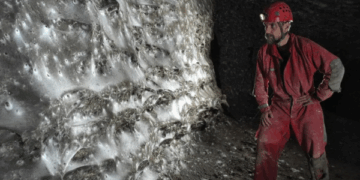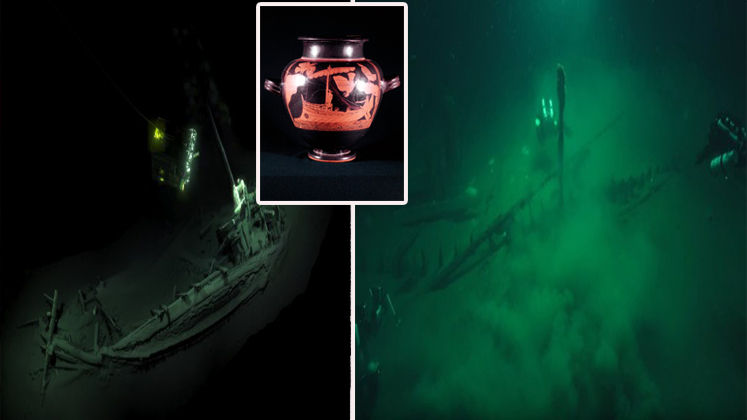Mars, often called the Red Planet due to its rusty hue, is a captivating rocky world with a cold, desert-like environment and a thin, low-density atmosphere. Despite its differences from Earth, Mars shares similarities like volcanic features, canyons, and impact basins, making it a prime target for scientific exploration. Its reddish color, caused by iron oxide (rust), and a day length of 24.6 hours, close to Earth’s, fuel curiosity about its past. Mars orbits the Sun every 669.4 Earth days and lies within the Sun’s habitable zone, where liquid water could exist—a key ingredient for life. Scientists believe Mars was once warmer and wetter, potentially habitable billions of years ago, making it a focal point in the search for extraterrestrial life. Recent images from NASA’s Mars rovers have revealed chilling discoveries, raising unsettling questions about the Red Planet’s secrets. Here, we explore the history of Mars exploration and the eerie findings that could reshape our understanding.
The History of Mars Exploration
NASA pioneered Mars exploration with the Mariner program in the 1960s. Mariner 4, launched in 1964, was the first spacecraft to successfully fly by Mars, sending back close-up images of a heavily cratered surface, revealing a barren, moon-like landscape. In the 1970s, the Viking program marked a milestone with Viking 1 and 2 landing on Mars in 1976. Equipped with instruments to search for life, they found no definitive evidence but provided stunning images, atmospheric data, and weather reports, advancing our understanding of Mars. The 1990s brought the Mars Pathfinder mission, landing in Ares Vallis on July 4, 1997, with Sojourner, the first rover to explore Mars. This mission confirmed the feasibility of rovers, paving the way for Spirit, Opportunity, Curiosity, and Perseverance.
A Groundbreaking Journey
The Curiosity rover, launched November 26, 2011, and landing in Gale Crater on August 6, 2012, via the daring “7 Minutes of Terror” sky crane maneuver, is a marvel of engineering. Roughly the size of a small SUV (7 ft tall, 9 ft wide, 10 ft long, 2,000 lbs), it’s equipped with high-resolution cameras, a robotic arm for drilling, and a multi-mission radioisotope thermoelectric generator (MMRTG) for continuous power. Curiosity’s mission is to determine if Mars ever had conditions to support life, analyzing geological layers at Mount Sharp. In 2020, the Perseverance rover, weighing 2,260 lbs, landed in Jezero Crater with advanced tools like SHERLOC (a UV laser for detecting organic compounds) and RIMFAX (ground-penetrating radar). Perseverance collects rock and soil samples for a future return mission, while its companion, Ingenuity, a 4-lb helicopter, achieved the first powered flight on Mars on April 19, 2021, completing 72 flights by January 2024.
A Detailed View of Mars
Perseverance’s 360° panoramic images offer breathtaking views of Mars’ terrain, helping scientists identify geological features and plan exploration. Its SuperCam, combining a camera, laser, and spectrometers, uses laser-induced breakdown spectroscopy to analyze rock composition remotely. Volcanic rocks reveal Mars’ volcanic history, while sedimentary rocks, formed by water or wind, contain silica and phosphates—key indicators of past water and potential habitability. Silica suggests water-rich environments, and phosphates, essential for DNA and energy transfer, hint at life’s building blocks, painting a picture of a once-habitable Mars.
Secrets of Ancient Water
Perseverance’s findings in Jezero Crater confirm Mars’ watery past. Satellites and rovers have revealed dried riverbeds, lakebeds, and valley networks, but Jezero’s complex history stands out. Images show sediments deposited in a delta, indicating prolonged water flow, and evidence of high-energy floods that moved large boulders. Curiosity, exploring Gediz Vallis in Gale Crater, found pure sulfur crystals on May 30, 2023, in a sulfate-rich area, suggesting water evaporation. Rounded stones and white halo shapes in rocks further confirm past water activity, while angular rocks point to dry landslides, unraveling Mars’ evolving landscape.
Revolutionary Discoveries
Perseverance’s exploration of Jezero Crater revealed igneous rocks from lava flows and magma, showing signs of water interaction, and sedimentary layers at Wildcat Ridge, indicating ancient lakebeds. These findings suggest conditions suitable for microbial life, with samples collected for future Earth analysis. Curiosity, in Gale Crater since 2012, found riverbeds, lakebeds, organic molecules, and seasonal methane spikes, hinting at past habitability or geological activity. Perseverance’s MOXIE experiment produced 4 ounces of oxygen from Mars’ carbon dioxide atmosphere, running 16 times by September 2023, a step toward supporting future human missions.
Subscriber Pick: Eerie Martian Figure
Among Curiosity’s recent images, scientists found photos of a colossal, humanoid-like figure half-buried in Martian sand. Its grotesque, alien features—shadowed eyes glinting eerily and a clawed, elongated hand—suggested an ancient sculpture. Weathered yet recognizable, it sparked debate: a natural formation or evidence of a lost Martian civilization? The chilling images captivated the public, raising questions about what else lies beneath Mars’ surface.
Mysterious Signals on Mars
Perseverance detected faint, rhythmic signals from an underground structure, unlike anything recorded on Mars. Initially suspected to be interference, the signals’ persistence sparked debate. They could stem from an unknown natural phenomenon or, more astonishingly, artificial origins, hinting at extraterrestrial technology. This discovery fuels speculation about a past Martian civilization, though scientists urge caution, calling for more data, improved imaging, and possible drilling missions. The signals have captivated global imagination, raising ethical questions about studying potential alien artifacts, planetary protection, and humanity’s readiness for such a revelation. With only 26 of 54 Mars missions succeeding, the Red Planet remains a challenging frontier, but advancements like SpaceX’s Starship signal a new era of exploration. What do these discoveries reveal about Mars’ past and future? Share your thoughts below.
























